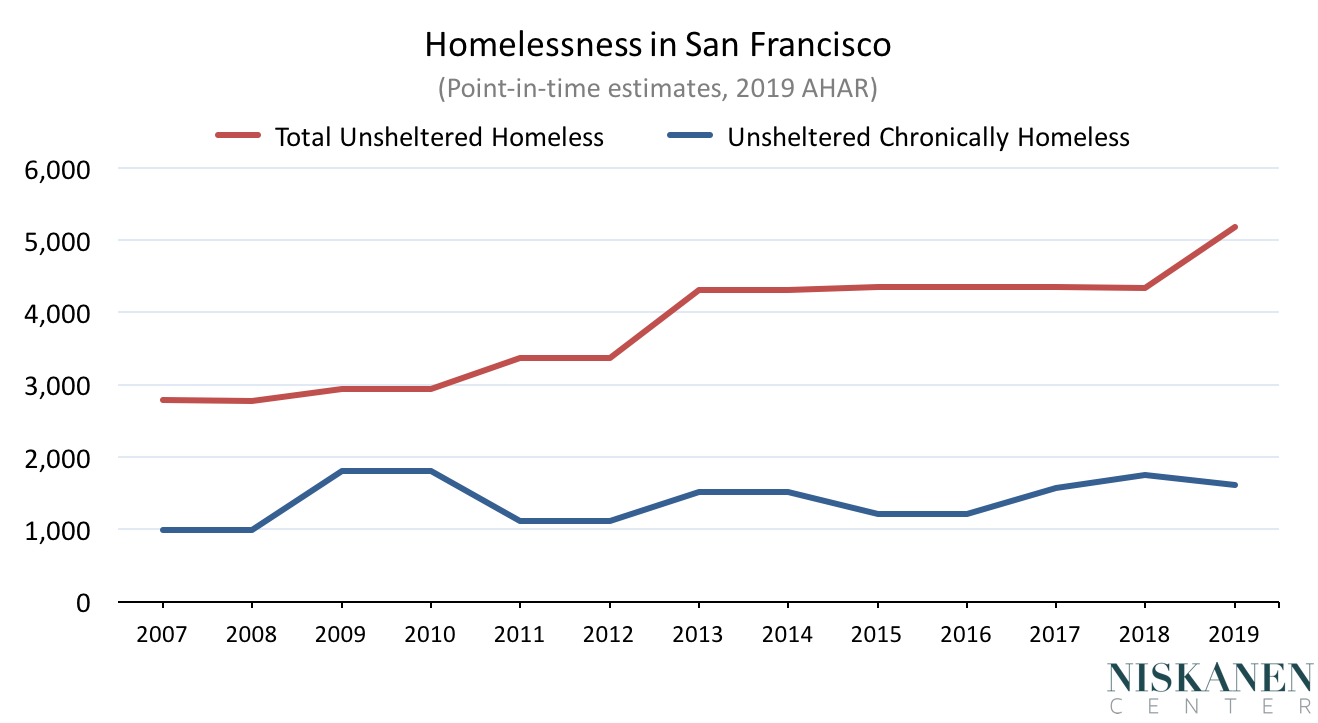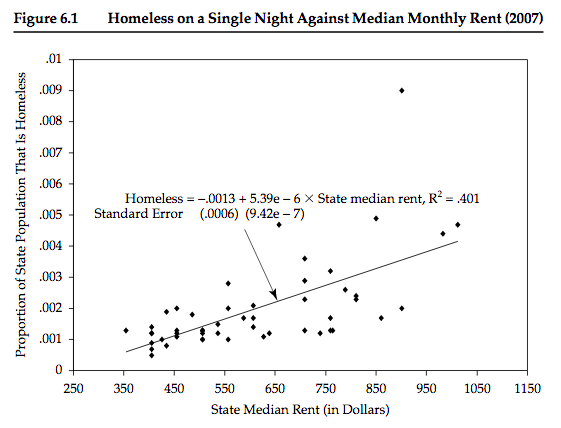Conor Dougherty’s essay in the New York Times, Build Build Build Build Build Build Build Build Build Build Build Build Build Build, is today’s must-read. It gives useful color to the “promiscuous distribution of veto power” restricting new housing supply throughout major U.S. cities–but in West Coast metro areas in particular. It also doubles as a great profile of Sonja Trauss, a leader of California’s “Yes In My Back Yard” or YIMBY movement, and an unsung hero of housing advocates across the country.
Importantly, Dougherty’s piece insists we face up to the link between housing prices and resurgent rates of homelessness:
America has a housing crisis. The homeownership rate for young adults is at a multidecade low, and about a quarter of renters send more than half their income to the landlord. Homelessness is resurgent, eviction displaces a million households a year, and about four million people spend at least three hours driving to and from work.
The connection should be obvious, but it’s still common to hear that California’s homelessness crisis is somehow special — related less to rental prices than to mental health policy, drug abuse, or even California’s warm climate. These are real factors, particularly for the chronically homeless population, but they can’t explain the trend. Indeed, the chronically homeless are just the tip of the iceberg, as virtually all of the increase in California’s unsheltered population since the Great Recession has been temporary: Individuals and whole families who must resort to friends and family, temporary shelters, their car, or the street at unpredictable points throughout the year.

In San Francisco, for example, the chronically unsheltered population has been relatively stable over the last decade, hovering between 1-2 thousand individuals. The total unsheltered homeless population, however, has surged from 3,000 to over 5,000 in just a few short years. This doesn’t capture those who were pushed out of housing but luckily found shelter. And as a “point-in-time” estimate, it dramatically understates the cumulative number of people who are unsheltered for any amount of time in a given year.
While there’s been more recent work on this topic, Steven Raphael’s 2007 paper demonstrating the relationship between land-use stringency, high rental prices, and homelessness is among my favorites.

The upshot to all this is that simply adding more shelter beds or expanding social services, while important, cannot conquer the contemporary homelessness crisis unless market-rate housing becomes much more affordable. Conflating the shocking rise in California’s temporary homelessness population with complex issues like chronic homelessness, drug addiction, and mental health is ultimately a way of shifting the debate away from the painfully obvious solution: Build, Build, Build, Build, Build.
Image credit: Hispalois (Creative Commons)